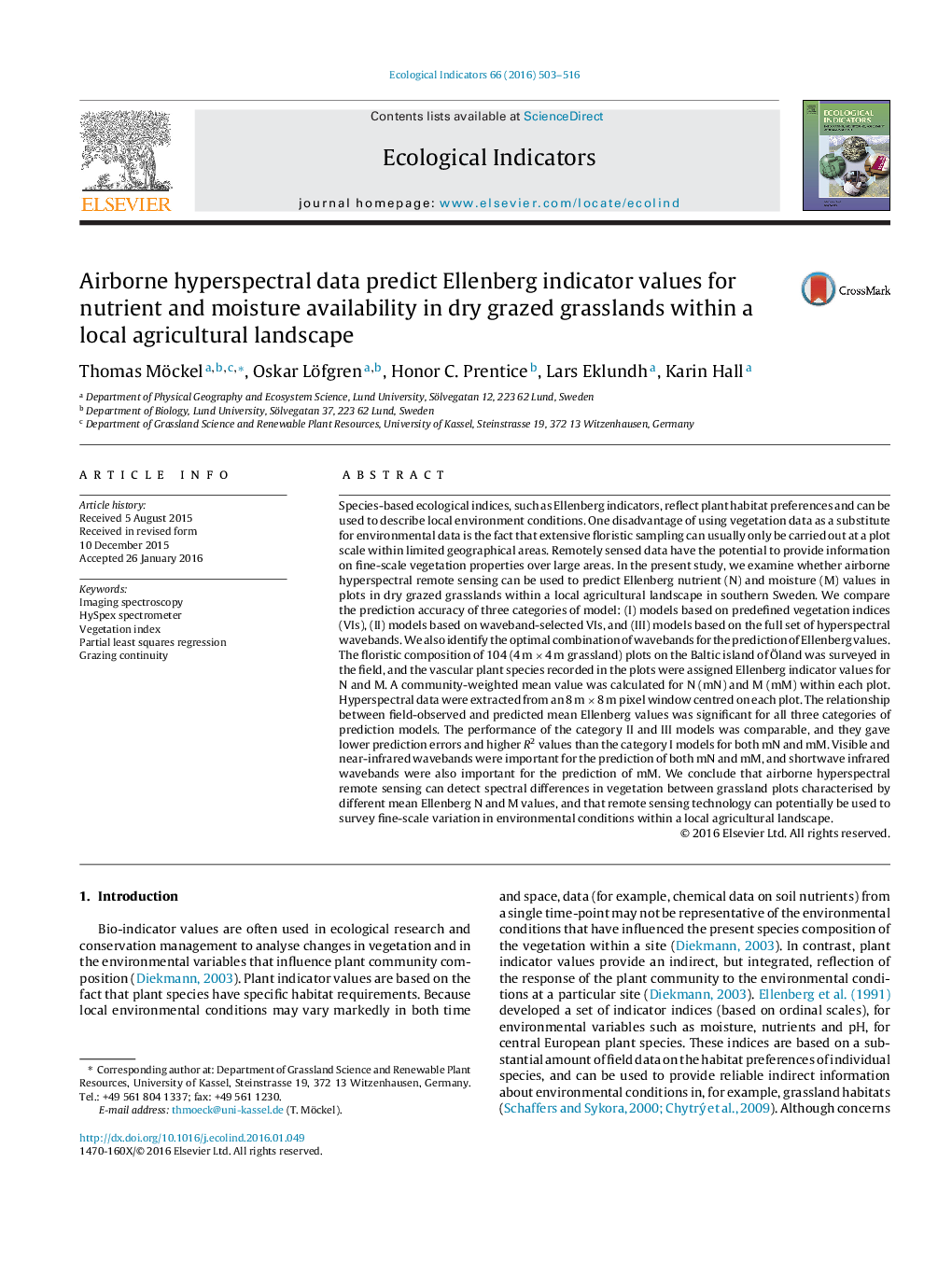| Article ID | Journal | Published Year | Pages | File Type |
|---|---|---|---|---|
| 6293527 | Ecological Indicators | 2016 | 14 Pages |
Abstract
Species-based ecological indices, such as Ellenberg indicators, reflect plant habitat preferences and can be used to describe local environment conditions. One disadvantage of using vegetation data as a substitute for environmental data is the fact that extensive floristic sampling can usually only be carried out at a plot scale within limited geographical areas. Remotely sensed data have the potential to provide information on fine-scale vegetation properties over large areas. In the present study, we examine whether airborne hyperspectral remote sensing can be used to predict Ellenberg nutrient (N) and moisture (M) values in plots in dry grazed grasslands within a local agricultural landscape in southern Sweden. We compare the prediction accuracy of three categories of model: (I) models based on predefined vegetation indices (VIs), (II) models based on waveband-selected VIs, and (III) models based on the full set of hyperspectral wavebands. We also identify the optimal combination of wavebands for the prediction of Ellenberg values. The floristic composition of 104 (4 m Ã 4 m grassland) plots on the Baltic island of Ãland was surveyed in the field, and the vascular plant species recorded in the plots were assigned Ellenberg indicator values for N and M. A community-weighted mean value was calculated for N (mN) and M (mM) within each plot. Hyperspectral data were extracted from an 8 m Ã 8 m pixel window centred on each plot. The relationship between field-observed and predicted mean Ellenberg values was significant for all three categories of prediction models. The performance of the category II and III models was comparable, and they gave lower prediction errors and higher R2 values than the category I models for both mN and mM. Visible and near-infrared wavebands were important for the prediction of both mN and mM, and shortwave infrared wavebands were also important for the prediction of mM. We conclude that airborne hyperspectral remote sensing can detect spectral differences in vegetation between grassland plots characterised by different mean Ellenberg N and M values, and that remote sensing technology can potentially be used to survey fine-scale variation in environmental conditions within a local agricultural landscape.
Related Topics
Life Sciences
Agricultural and Biological Sciences
Ecology, Evolution, Behavior and Systematics
Authors
Thomas Möckel, Oskar Löfgren, Honor C. Prentice, Lars Eklundh, Karin Hall,
